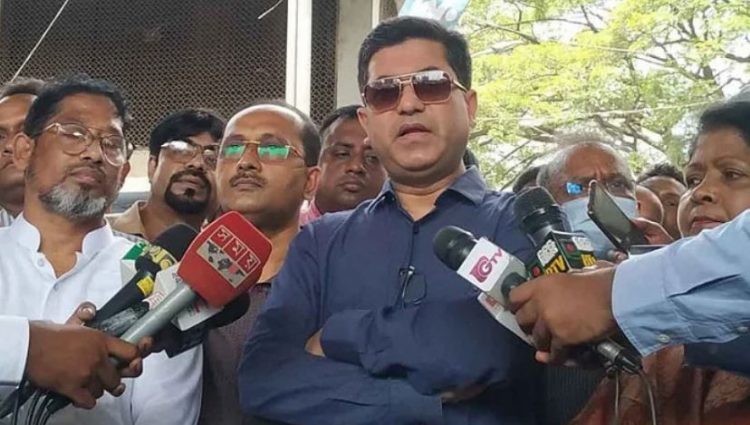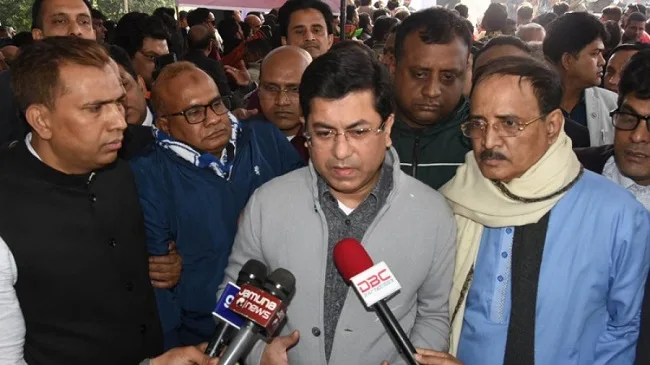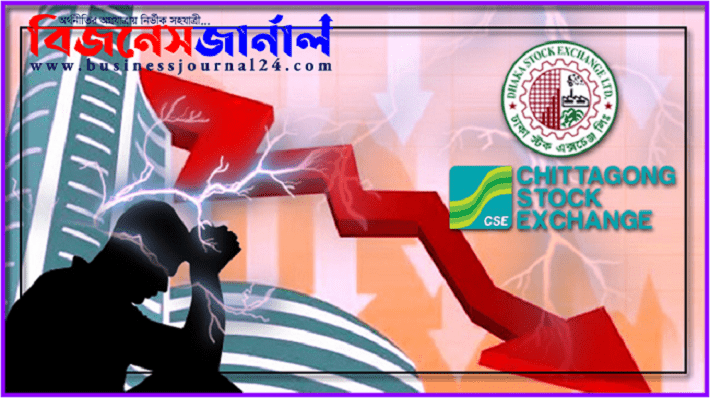Five-faced Anandabazar in praise of Bangladesh

- আপডেট: ০৬:২৭:০১ অপরাহ্ন, সোমবার, ৮ ফেব্রুয়ারী ২০২১
- / ৪১৩৯ বার দেখা হয়েছে
Bangladesh has surpassed India in per capita gross domestic product (GDP). According to the International Monetary Fund (IMF) report, the per capita GDP of Bangladesh in the 2020 calendar year will be 1 thousand 6 dollars. At the same time, India’s per capita GDP will be 1 thousand 6 dollars.
If the IMF’s forecast is correct, India will be slightly ahead of Pakistan and Nepal in terms of per capita GDP. As such, Bangladesh will actually come before India, Pakistan and Nepal. The IMF released its World Economic Outlook (WEO) on October 13 last year. That is where the forecast is given.
After that, discussions and criticisms started all over India. As soon as the IMF report came out, the country’s opposition leader Rahul Gandhi targeted the Modi government. In a sarcastic tone, he tweeted that the great success of the BJP’s hateful nationalist culture in the last six years is that Bangladesh is going to overtake India. Trinamool MP Abhishek Banerjee also did not stop criticizing.
In his tweet, India’s economy is in decline. Even Bangladesh is going to surpass us in per capita national production. Listen carefully, this is not their passage, our great fall. This is Narendra Modi’s dream of 5 lakh crore economy!
However, the Modi government’s insider interpretation of the recent IMF report is that in terms of purchasing power, India’s per capita GDP in 2019 was 11 times higher than Bangladesh’s. India’s population is six times that of Bangladesh, and that argument is being put forward in response to criticism.
An editorial in the Indian media Anandabazar titled ‘Thakurghare’ on such an issue has commented that India should learn from this achievement of Bangladesh. What is written in the editorial of Anandabazar praising Bangladesh.
By the time the new Prime Minister of the fledgling country, Sheikh Mujibur Rahman, landed on the ground in Calcutta on February 8, 1972 and began his speech on the ground, the entire metropolis of Kolkata had become a buzzing field. Bangabandhu not only stood in the heart of Calcutta that day and proclaimed the message of victory in a loud voice, but also prayed for the well-being of the Bengalis on behalf of an endangered and impoverished newborn state. Fifty-nine years have passed, this February marks the fiftieth anniversary of that day. The fledgling small country of that day is now busy glorifying the subcontinent. Seeing the progress of Bangladesh, other countries of this subcontinent, even the so-called regional superpowers are jealous today. Dhaka’s foreign exchange reserves are now three times that of Islamabad. When the Pakistani Prime Minister said that he would make Pakistan Sweden, the advisers said that first he became equal to Bangladesh, then Sweden. On the other hand, International Monetary Fund 2020 Account: Bangladesh lags behind India in terms of GDP per capita. The two countries came to this place in the pre-Kovid period. Since then, Covid-19 has made the Indian economy more vulnerable than the Bangladeshi economy. Since the character of any journey is determined by the starting point: the state of India in 1972, and the new Bangladesh (referred to by the then US Secretary of State Henry Kissinger as the ‘Basket Case’), one can see how far ahead Gone or backward.
As soon as the IMF’s account came to the notice of the international community, the active and concerned BJP IT cell began to explain why this comparison between Bangladesh and India is not a true reflection of reality. Only those familiar with the nature of the IT cell’s argument will understand what kind of maneuver has been used to establish this statement. The argument that it was the textile sector of Bangladesh that saved him from the cowardly crisis has also found a place in the controversy — although it is difficult to understand who prevented India from concentrating on that industry or any other industry at all. One more thing. Economists such as Amartya Sen have repeatedly said that GDP is not the only calculator to understand development, but also the basic needs and living standards of the people. He showed how India, which was once at the very top of the subcontinental list in the Human Development Index, has gradually moved to the bottom of the list. At the end of 2020, The average life expectancy in Bangladesh is three years higher than in India, the infant mortality rate is lower than in India (India 26 per thousand, Bangladesh 25), the two countries are literate, Bangladesh (36 per cent) and India (34 per cent) in terms of urban population and women in terms of employment. Bangladesh is far ahead (India 20 percent, Bangladesh 36 percent). Who will infiltrate in which direction, so now the question. Not all the ‘responsibilities’ of this whole picture should be borne by the present ruling party in Delhi, even though the situation has worsened over the last few years. But the current ruler’s idea of ’who is in the temple’ is a living proof that they themselves share in the ‘crime’. But Delhi should not have left an event like the prosperity of Bangladesh in the hands of IT cell propaganda, with the help of economists and sociologists, how can we move forward by learning something from that country. The infant mortality rate is lower than that of India (India 27 per thousand, Bangladesh 25 per thousand), the two countries in literacy side by side, Bangladesh (36 per cent) and India (34 per cent) in terms of urban population and Bangladesh is far ahead in terms of female capacity (India 20 per cent, Bangladesh 38). Percent). Who will infiltrate in which direction, so now the question. Not all the ‘responsibilities’ of the whole picture should be borne by the present ruling party in Delhi, even though the situation has worsened over the years. But the current ruler’s idea of ’who is in the temple’ is a living proof that they themselves share in the ‘crime’. But Delhi should not have left an event like the prosperity of Bangladesh in the hands of IT cell propaganda, with the help of economists and sociologists, how can we move forward by learning something from that country. The infant mortality rate is lower than that of India (India 27 per thousand, Bangladesh 25 per thousand), the two countries in literacy side by side, Bangladesh (36 per cent) and India (34 per cent) in terms of urban population and Bangladesh is far ahead in terms of female capacity (India 20 per cent, Bangladesh 38). Percent). Who will infiltrate in which direction, so now the question. Not all the ‘responsibilities’ of this whole picture should be borne by the present ruling party in Delhi, even though the situation has worsened over the last few years. But the current ruler’s idea of ’who is in the temple’ is a living proof that they themselves share in the ‘crime’. But Delhi should not have left the prosperity of Bangladesh in the hands of IT cell propaganda, but with the help of economists and sociologists, we can learn some lessons from that country and move forward. Bangladesh (37 per cent) and India (34 per cent) in terms of urban population and Bangladesh is far ahead in terms of female capacity (India 20 per cent, Bangladesh 36 per cent). Who will infiltrate in which direction, so now the question. Not all the ‘responsibilities’ of this whole picture should be borne by the present ruling party in Delhi, even though the situation has worsened over the last few years. But the current ruler’s idea of ’who is in the temple’ is a living proof that they themselves share in the ‘crime’. But Delhi should not have left an event like the prosperity of Bangladesh in the hands of IT cell propaganda, with the help of economists and sociologists, how can we move forward by learning something from that country. Bangladesh (37 per cent) and India (34 per cent) in terms of urban population and Bangladesh is far ahead in terms of female capacity (India 20 per cent, Bangladesh 36 per cent). Who will infiltrate in which direction, so now the question. Not all the ‘responsibilities’ of this whole picture should be borne by the present ruling party in Delhi, even though the situation has worsened over the last few years. But the current ruler’s idea of ’who is in the temple’ is a living proof that they themselves share in the ‘crime’. But Delhi should not have left an event like the prosperity of Bangladesh in the hands of IT cell propaganda, with the help of economists and sociologists, how can we move forward by learning something from that country. However, in the last few years, the situation has worsened. But the current ruler’s idea of ’who is in the temple’ is a living proof that they themselves share in the ‘crime’. But Delhi should not have left the prosperity of Bangladesh in the hands of IT cell propaganda, but with the help of economists and sociologists, we can learn some lessons from that country and move forward. However, in the last few years, the situation has worsened. But the current ruler’s idea of ’who is in the temple’ is a living proof that they themselves share in the ‘crime’. But Delhi should not have left an event like the prosperity of Bangladesh in the hands of IT cell propaganda, with the help of economists and sociologists, how can we move forward by learning something from that country.

































